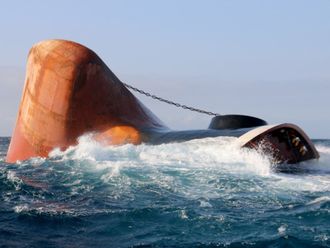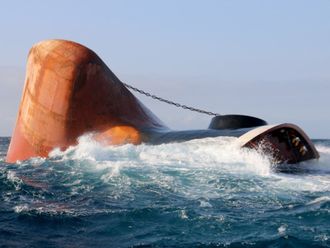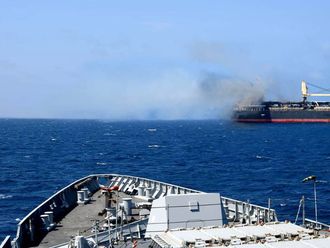Washington: The evacuation of 125 US Special Operations advisers from Yemen in the past two days is the latest blow to the Obama administration’s counterterrorism campaign, which is struggling with significant setbacks in Syria, Libya and elsewhere in the volatile region, US officials said Sunday.
The loss of Yemen as a base for US counterterrorism training, advising and intelligence-gathering carries major implications not just there, but throughout a region that officials say poses the most grievous threat to US global interests and to the country itself.
The rapid rise of Daesh has commanded the immediate attention of President Barack Obama and other Western leaders in the past year. But US officials say that Al Qaida’s affiliate in Yemen, which includes the most potent bomb-maker in the terrorist world, still poses the most direct threat to Americans at home, abroad or aboard commercial aircraft. Since 2009, the United States has thwarted at least three plots by the group to bring down airliners.
Even after the withdrawal of US troops, the CIA will still maintain some covert Yemeni agents in the country. Armed drones will carry out some air strikes from bases in nearby Saudi Arabia or Djibouti in the Horn of Africa, as was done most recently on Feb. 20. Spy satellites will still lurk overhead and eavesdropping planes will try to suck up electronic communications.
But the loss of US personnel on the ground makes any counterterrorism mission far more difficult.
“We will have no intelligence footprint,” Rep. Michael McCaul, R-Texas, chairman of the House Homeland Security Committee, said Sunday on ABC’s “This Week.” “Good intelligence stops plots against the homeland. Without intelligence, we cannot effectively stop it.”
Other lawmakers, though, have expressed concern that the administration is exaggerating the terrorism threat, and warn that this could lead to further US military entanglements overseas.
But administration officials say that in many trouble spots they rely on allies - such as the French in West Africa to counter extremists like Boko Haram - rather than deploying large numbers of US troops.
The United States has worked around obstacles like Yemen’s turmoil before, notably in Pakistan and Somalia, where the CIA and the Pentagon in the past decade stitched together local spy networks that provided information for drone strikes and occasional commando raids on Al Qaida militants. But that approach has always been considered an imperfect substitute to having US forces on the ground, training and advising military and security allies.
This challenge will also be a part of the discussions Obama and his top aides will hold with President Ashraf Ghani of Afghanistan this week.
About 2,000 of the approximately 10,000 troops the US is likely to carry over into 2016 - more than originally planned - are assigned to counterterrorism missions, mainly along the Afghan-Pakistan border. The CIA relies on the US troops to provide security for its covert counterterrorism operations, including drone strikes in Pakistan.
What has complicated the US global counterterrorism mission most dramatically in the past year is the rise of Daesh. The group’s expanding attraction now seems to be inspiring not only ideological followers from Nigeria to Afghanistan, but also loyalists with only tenuous ties to the parent group who are willing to carry out deadly attacks, as happened last week at a popular museum in Tunisia and two mosques in Yemen.
Daesh began attracting pledges of allegiance from groups and individual fighters after it declared the formation of a caliphate, or religious state, in June. Counterterrorism analysts say it is using Al Qaida’s franchise structure to expand its geographic reach, but without Al Qaida’s rigorous, multiyear application process. This could allow its franchises to grow faster, easier and farther.
It is a trend that US counterterrorism officials say they are struggling to understand and defeat. Indeed, John O. Brennan, the CIA director, voiced deep concerns this month over “the emergence of a terrorist threat that is increasingly decentralized, difficult to track and even more difficult to thwart.”
With Daesh and its supporters producing as many as 90,000 Twitter posts and other social media responses every day, US officials also acknowledge the difficulty of blunting the group’s digital momentum in the same way a US-led air campaign has slowed its advances on the battlefield in Iraq and, to a lesser extent, in Syria.
“We have an effective counternarrative, but the volume, the sheer volume, we are losing the battle today,” Michael B. Steinbach, the FBI’s top counterterrorism official, told a House panel last month. “The amount of use of social media and other Internet-based activities eclipses our effort.”
Not only that, but after the disclosures by Edward J. Snowden, the former National Security Agency contractor, officials say it has become much harder for spy agencies to monitor what terrorists are saying and plotting, as militants have moved to couriers or communication networks the NSA has yet to crack.
“We have less and less insight into terrorist planning because of the spread of encryption technology and the shrinking opportunity for human intelligence sources when it comes to troubled spots,” Nicholas J. Rasmussen, director of the National Counterterrorism Centre, said in a speech last month.
The only silver lining to the collapsing security situation, some US officials say, is that Houthis are even more dedicated to fighting Al Qaida than many of the Yemeni forces have been.
Still, Western officials and Yemeni experts fear that a security vacuum resembling Somalia’s would draw even more jihadis to ungoverned territory in Yemen, where they would have the space and time to plot attacks against the West.
“I don’t even think it’s accurate to think of Yemen as a single country anymore,” said Gregory D. Johnsen, a Yemen specialist and writer at large at BuzzFeed. “At best it has dissolved a series of power blocs that are less and less able to influence change across the country.”











